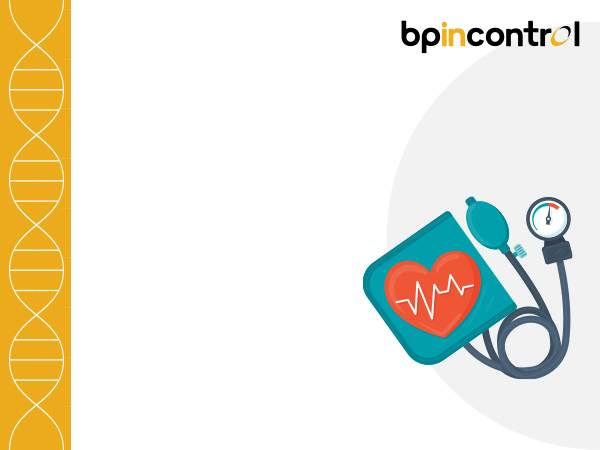How can Eating Affect Your Blood Pressure?

Table of Contents
Generally, after-meal blood pressure levels vary from one person to the other. Your body may experience a drop in blood pressure because the body directs the blood to the gastrointestinal system to help in the digestion process and to absorb the nutrients in digested food. The blood vessels further away from the digestive system narrow, which can trigger an increased heart rate after eating. This process takes place to maintain sufficient blood flow to the brain and other organs when most of the blood is going towards the digestive system.
High blood pressure is known as the ‘silent killer’, because it doesn’t cause many symptoms. However, in a rare condition called postprandial hypertension, there is a considerable spike in blood pressure after eating. Some symptoms that can help you spot this condition include:
- Breathing difficulty
- Chest pain (Angina)
- Headache
- Nausea
- Anxiety
- Changes in vision
- Dizziness
Foods That Can Raise Blood Pressure
It is essential to understand the foods that can trigger and elevate your blood pressure after eating.
- Foods high in saturated fat, salt, and sodium can raise blood pressure. Foods typically high in sodium include processed meats, condiments, snacks, canned foods, and sauces. Consuming excess salt can cause the body to retain extra water to remove sodium from the body. This increased moisture places added stress on the heart and blood vessels, causing high blood pressure in some individuals.
- Monosodium glutamate (MSG) used as a flavour enhancer is also associated with a rise in blood pressure.
- Drinking caffeinated beverages, such as soda, tea, or coffee, after having a meal can also leads to high blood pressure.
Foods That Can Lower Blood Pressure
It is imperative to have a heart-healthy Mediterranean diet or DASH (Dietary Approaches to Stop Hypertension) diet to reduce the risk of blood pressure. These foods include a fibrous and high-protein diet low in salt, saturated fats, and sugar, and rich in omega-3 fatty acids. They consist of:
- Nuts and seeds
- Olive oil
- Low-fat dairy products
- Whole grains
- Fresh produce
Healthy eating also indicates adding certain foods to your diet, which comprise magnesium and potassium as they can help lower blood pressure levels.
Lifestyle Tips for Managing Blood Pressure After Eating
Lifestyle conditions, such as working out, practicing yoga, meditating to manage stress, eating healthy, getting adequate sleep, and refraining from drinking, go a long way in helping you manage blood pressure. If you want to measure your blood pressure after lunch, ensure you focus on specific activities that can prevent any spikes, such as the following –
- Take a walk after each meal for better digestion;
- Refrain from smoking after eating, as consuming tobacco can also elevate hypertension;
- Don’t measure your blood pressure immediately after eating. Wait for 30 minutes before measuring; and
- Sit in a relaxed position and ensure the cuff is placed properly to get a correct reading.
When to Seek Medical Advice
It is recommended to have your blood pressure checked every once in a while, especially for individuals who are overweight or over the age of 40. Call upon your doctor if you –
- Have a consistently high blood pressure reading without being diagnosed for hypertension
- Feel your blood pressure medications are causing side effects
- Manage your blood pressure well, yet the readings tend to be above the ‘normal’ range more than once
Conclusion
What you eat and the lifestyle you build around your diet can result in either high blood pressure or a drop after meals. Therefore, consuming a balanced diet and following the aforementioned ways for a healthy lifestyle can help keep hypertension at bay.
FAQs
1. Should I be concerned about occasional changes in blood pressure after eating?
There is no cause for concern as long as temporary increases in blood pressure are at a normal range. Prevention is better than cure. Therefore, if needed, consult your doctor to understand whether there is any underlying issue.
2. Who is at risk of experiencing postprandial hypotension?
Individuals who are at a higher risk of experiencing postprandial hypotension are:
- Overweight
- Above the age of 65 or older
- Already diagnosed with high blood pressure
- Diagnosed with diabetes
- More likely to have it because it runs in the genes
3. What are the symptoms of postprandial hypotension?
Postprandial hypotension indicates a decrease in blood pressure after eating. Some symptoms of postprandial hypotension are:
- Dizziness
- Nausea after eating
- Fainting
- Weakness
- Lightheadedness
- Chest pain
- Black spots in your field of vision
Disclaimer
The information contained in this article is to educate, spread awareness in relation to hypertension and other diseases to the public at large. The contents of this article are created and developed by BPinControl.in through its authors, which has necessary, authorisations, license, approvals, permits etc to allow usage of this articles on The Website. The views and opinions expressed in this article are views, opinions of the respective authors and are independently endorsed by doctors. Although great care has been taken in compiling and checking the information in this article, The Website shall not be responsible, or in any way liable for any errors, omissions or inaccuracies in this article whether arising from negligence or otherwise, or for any consequences arising therefrom. The content of this article is not a substitute for any medical advice. The Website shall not be held responsible or liable for any consequence arising out of reliance on the information provided in the article.


Comments (0)
No comments found.Add your comment